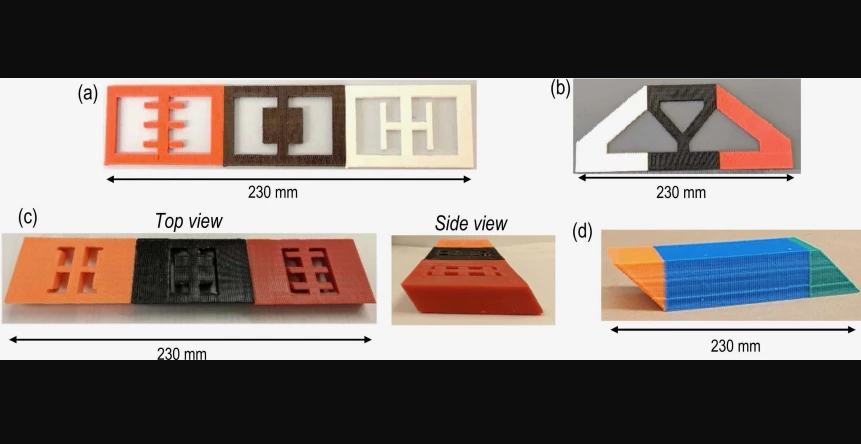Although 3D printing technology continues to improve, it's still limited by relatively long print times and low resolution. A new technology could help, by simultaneously utilizing multiple small print nozzles instead of a single big one.
In a conventional FDM (fused deposition modelling) 3D printer, molten plastic or resin is extruded through a single nozzle, building up a three-dimensional object in successive deposited layers which bond with one another as they cool. Throughout the printing process, the nozzle gets moved across the print bed via a structure known as a gantry.
Needless to say, printing large objects in this fashion can take quite a long time. The process can be speeded up by using a larger nozzle – thus allowing more material to be deposited at once – but doing so results in larger individual layers of material, giving the finished object a coarser, lower-resolution appearance.
That's where Multiplexed Fused Filament Fabrication (MF3) comes in.
Developed by a team at New Jersey's Rutgers University, the technology incorporates several small nozzles which are all mounted on a single gantry. As that gantry moves, each nozzle independently extrudes or withholds material, depending on its location relative to the object being printed.
This means that different sections of the object are being printed at the same time, out of relatively thin layers of material. As a result, the object gets printed faster, yet also at high resolution.

"The core of our technology is a control software that we have developed to control material deposition for each nozzle independently, even though all nozzles follow the same motion trajectory," lead scientist Jeremy Cleeman told us. "We also developed a thermal simulation to help us better understand bonding happening at different section interfaces. By tuning a variety of parameters, we can ensure that the deposited filament will properly bond to previously cooled filament that is adjacent."
Along with being used to print single large objects, MF3 can also print multiple small objects simultaneously. And as an added bonus, if one of the nozzles fails, the software alters the printing process so that one or more of the other nozzles can pick up the slack.
"We have more tests to run to understand the strength and geometric potential of the parts we can make, but as long as those elements are there, we believe this could be a game changer for the industry," said Cleeman.
A paper on the research was recently published in the journal Additive Manufacturing.
Source: Rutgers University




